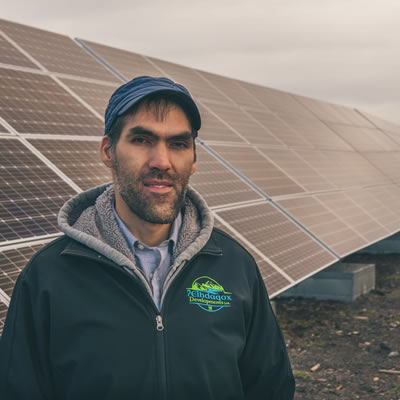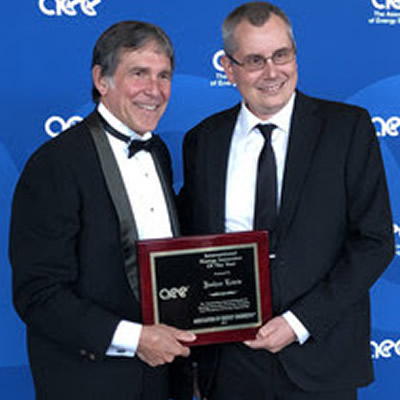Funding supports research into wave energy
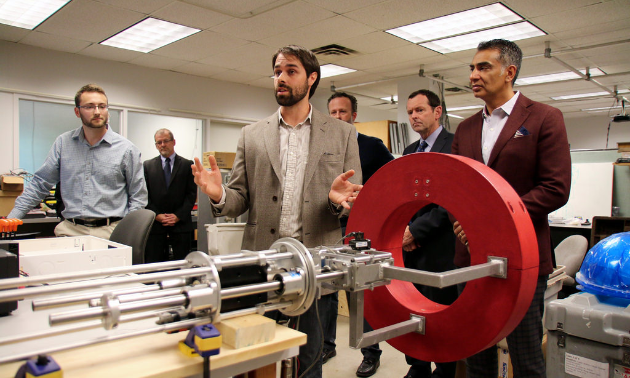
University of Victoria professor — Photo courtesy news.gov.bc.ca
The Province is providing $150,000 from the Innovative Clean Energy (ICE) Fund to the West Coast Wave Initiative (WCWI) at the University of Victoria to support research into the potential of ocean waves to generate clean, renewable and affordable electricity.
"Our B.C. coast is not only one of the province’s most beautiful resources, its waves could also be a source of clean energy, and research like this furthers our understanding of wave patterns and energy potential,” said Minster of Technology, Innovation and Citizens’ Services Amrik Virk, who toured the WCWI’s operations at the university’s Institute of Integrated Energy Systems today. "Our BC Tech strategy is aimed at growing our clean-tech sector, and with this ICE funding we can support the growth of an emerging energy sector, which would benefit our remote coastal communities and perhaps change the world."
The funding will be used for the purchase, deployment and maintenance of a wave measurement buoy. It will be the fifth in a fleet of buoys being used by the WCWI, and will support researchers’ efforts to complete a detailed wave energy resource assessment of the entire B.C. coastline. BC Hydro has also contributed $60,000 to the WCWI to support wave measurement research.
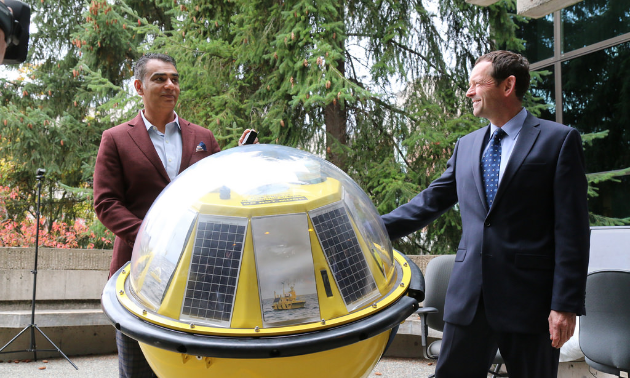
Wave measurement buoy on display — Photo courtesy news.gov.bc.ca
The buoys provide high-resolution measurements of coastal wave height, direction and frequency used to calibrate and assess wave energy models being developed by researchers to determine the feasibility of converting wave energy to electricity. All five buoys have been built by AXYS Technologies in Sidney, B.C.
“While marine energy is not currently a cost-competitive source of electricity for B.C. due to our abundant and affordable hydroelectric resources, wave and tidal energy do hold potential for other countries that do not have access to clean or renewable sources who are relying on fossil fuels to produce energy, and for remote coastal B.C. communities that currently rely upon diesel generation” said Minister of Energy and Mines Bill Bennett. “Our funding of $150,000 supports the internationally recognized wave-energy research taking place at the WCWI, and will help establish a marine power sector in B.C. that can serve growing global demand for clean-energy technology.”
The WCWI operates and maintains the only directional wave measurement buoys on the west coast of Canada and uses advanced computer aided design tools to research and develop technologies to convert wave-supplied power into electricity that could be fed into the electricity grid. Since its inception in 2007, the WCWI has grown to become the centre of Canadian wave energy research and development.
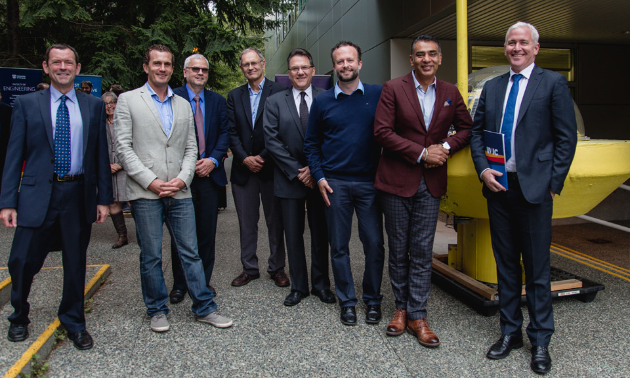
University of Victoria and Province representatives — Photo courtesy news.gov.bc.ca
"This buoy monitoring project reflects UVic’s ongoing commitment to and research strength in clean energy initiatives and ocean observation systems,” said Jamie Cassels, president of the University of Victoria. “The exciting public and private sector partnership will advance potential wave-energy technologies in B.C. and contribute to the development of new clean-energy sources for coastal communities.”
“Worldwide, governments are committing to increased electrification of the energy supply. Whether socially or environmentally motivated, the movement toward sustainable electricity sources depends on the world having a full portfolio of renewable energy technologies – wind, solar, tidal and wave – to draw from,” said Dr. Brad Buckham, director of the WCWI. "In B.C. we’re uniquely positioned to champion the development of wave-energy devices. The knowledge provided by these measurement buoys is critical to our efforts to improve the design and performance of wave-energy conversion machines.”
"AXYS is proud to have been a part of the University of Victoria's West Coast Wave Initiative program over the last seven years by supplying environmental monitoring buoys to assist in the collection of wave, meteorological and oceanographic data across different locations," said Terry Tarle, AXYS president and CEO. "We hope to continue our collaboration with the WCWI as they progress in their studies of understanding energy resources along Vancouver Island's west coast."
“BC Hydro makes significant investments in clean energy each year,” said Randy Reimann, director of energy planning at BC Hydro. “Last year, about 98% of the energy generated in B.C. was from clean sources. As long-term demand for power continues to grow, BC Hydro anticipates that there will be a need for new, alternative sources of clean and renewable electricity that can help us meet the electricity needs of British Columbia. For that reason, we are interested in understanding wave resource potential in B.C.”
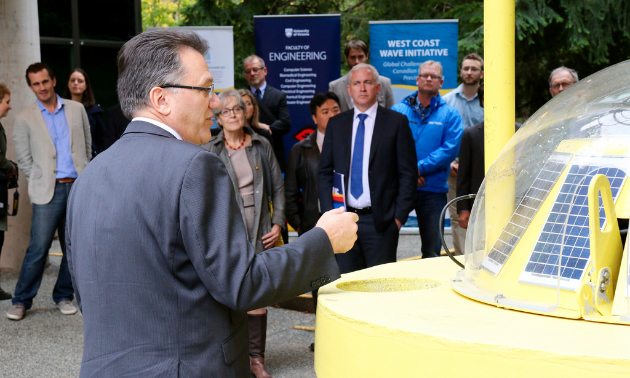
explaining how the wave measurement buoy works — Photo courtesy news.gov.bc.ca
"Canada has huge wave-energy potential and British Columbia has some of the best wave resources,” said Elisa Obermann, executive director of Marine Renewables Canada. “The research and innovation the West Coast Wave Initiative is leading is critical to the development of wave technology and Canada’s marine renewable energy industry. We are pleased to see the Government of British Columbia supporting this foundational work.”
Administered by the Ministry of Energy and Mines, the ICE Fund is a legislated special account established in 2007, and is designed to support government’s energy and environmental priorities.
Since 2008, the ICE Fund has provided approximately $71 million to support pre-commercial clean-energy technology projects, clean-energy vehicles, research and development, and various energy-efficiency programs.
The #BCTECH Strategy is a key component of the BC Jobs Plan to support the growth of B.C.’s vibrant technology sector and strengthen British Columbia’s diverse innovation economy. The multi-year strategy includes a $100-million BC Tech Fund and initiatives to increase talent development and market access for tech companies that will drive innovation and productivity across the province.


